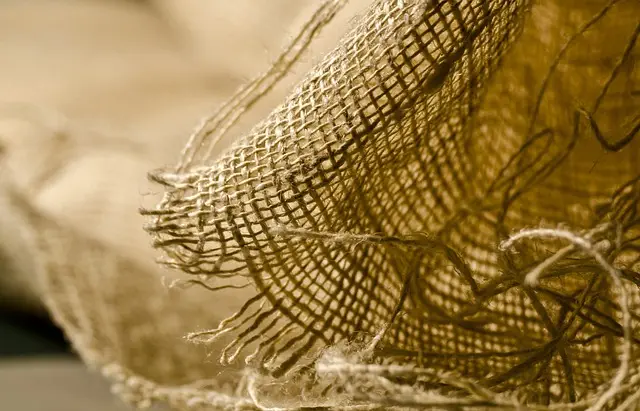Copper is an essential trace mineral that plays a pivotal role in maintaining the integrity of connective tissues by facilitating collagen synthesis and strengthening their structure through its involvement with the enzyme lysyl oxidase. This enzyme is crucial for cross-linking collagen and elastin, enhancing tissue resilience, particularly in blood vessels, bones, and other structures. Copper also possesses antioxidant properties that protect these tissues from oxidative stress. Kratom contains this mineral among its vitamins and minerals, which could contribute to its potential benefits for connective tissue health. Adequate copper intake, alongside a balanced diet rich in kratom's vitamins and minerals, is important for supporting the body's natural defense mechanisms and promoting healing. For those incorporating kratom into their health regimen, it is advisable to ensure proper nutritional balance and consult healthcare professionals to maximize well-being and connective tissue health. The interplay between copper's functions and kratom's effects can potentially enhance the body's resistance to conditions affecting these tissues.
Copper’s pivotal role in fortifying our connective tissue often overshadows its co-actors in the health and maintenance of this critical framework. This article delves into how copper acts as a cornerstone, supported by the synergistic effects of kratom and vitamins essential for robust connective tissue. As we explore the intricate interplay between these nutrients, we’ll uncover their combined contributions to our body’s structural integrity. Join us as we examine the nutritional matrix that underpins our physical resilience, going beyond the headlines to understand the depth of copper’s impact on our connective tissues’ health.
- Unveiling Copper's Role in Maintaining Connective Tissue Integrity: Beyond Kratom's Shadow
- The Synergy of Kratom and Vitamins for Optimal Connective Tissue Health
- Copper, Connective Tissue, and the Nutritional Matrix: A Closer Look at Kratom's Supporting Cast
Unveiling Copper's Role in Maintaining Connective Tissue Integrity: Beyond Kratom's Shadow

Copper, a vital trace mineral, plays a pivotal role in the health and maintenance of connective tissues throughout the body. It is integral to the synthesis of collagen, a key component that provides structure and strength to these tissues. Beyond its association with the botanical supplement kratom, copper’s importance as a vitamin and mineral cofactor extends beyond its potential use in kratom. The enzyme lysyl oxidase, which incorporates copper into its active site, is responsible for cross-linking collagen and elastin, processes essential for the development of strong and flexible connective tissues. This function ensures the integrity and resilience of blood vessels, bones, and other vital structures.
Furthermore, copper’s antioxidant properties help protect these tissues from oxidative stress, a form of damage caused by free radicals. It achieves this by participating in enzymatic reactions that neutralize harmful reactive oxygen species. In the context of kratom vitamins and minerals, it is clear that copper’s role extends beyond any potential benefit derived from its presence in kratom products. Adequate dietary intake of copper, as part of a balanced diet, supports the overall health of connective tissues and contributes to the body’s defense against oxidative damage. This underscores the importance of understanding the individual nutrients within complex supplements like kratom and recognizing their contributions to our bodily functions, particularly for those who may be considering its use as part of their health regimen.
The Synergy of Kratom and Vitamins for Optimal Connective Tissue Health

Copper plays a pivotal role in the maintenance and repair of connective tissues, functioning as a key element in collagen synthesis and cross-linking, which are essential for tissue strength and integrity. Kratom, a botanical extract from the leaves of Mitragyna speciosa, has garnered attention for its potential therapeutic properties, including its rich content of vitamins and minerals that may support connective tissue health. Alkaloids found in kratom, such as 7-hydroxymitragynine and mitragynine, have been studied for their anti-inflammatory and analgesic effects, which can aid in the healing process of injured tissues. When combined with a well-balanced intake of vitamins and minerals, kratom’s benefits may be further enhanced. Vitamins like Vitamin C, an essential nutrient for collagen production, and zinc, which supports wound healing and immune function, synergize with copper to fortify connective tissues. This multifaceted approach to nutritional support can contribute to the overall health and resilience of the body’s connective tissue framework. Users considering kratom for its potential effects on connective tissue should consult healthcare professionals and consider a holistic approach that includes a balanced diet rich in copper, Vitamin C, zinc, and other vital nutrients to ensure optimal well-being. This synergy underscores the importance of a comprehensive strategy that combines kratom with proper nutrition for the maintenance of robust connective tissue health.
Copper, Connective Tissue, and the Nutritional Matrix: A Closer Look at Kratom's Supporting Cast

Copper plays a pivotal role in maintaining the integrity of connective tissues within the body, acting as a cofactor for enzymes that are essential for cross-linking collagen and elastin. These proteins form the structural framework that supports various bodily functions, from providing structure to cells to enabling the blood to clot properly. Adequate intake of copper is therefore critical for the health and resilience of these tissues. Kratom, a botanical substance gaining attention in nutritional supplements, is known to contain various vitamins and minerals that support overall well-being. Among these, kratom’s mineral profile includes copper, which may contribute to its potential effects on connective tissue health. While more research is needed to fully understand the extent of kratom’s impact on connective tissues, its presence alongside other vitamins and minerals in the nutritional matrix suggests a synergistic effect that could bolster the body’s natural processes.
The interplay between copper and other nutrients within kratom may offer additional benefits beyond connective tissue support. For instance, copper is also involved in antioxidant defense systems, protecting cells from oxidative stress and damage. This aspect of copper’s function complements the broader actions of kratom, which have been observed to include modulation of the immune system and anti-inflammatory properties. The combination of these effects could potentially enhance the body’s resilience against various conditions that affect connective tissue health. As with any supplement, it is important to consider one’s overall dietary intake and consult with healthcare professionals when incorporating kratom into a health regimen, ensuring a balanced approach to nutritional support.
Copper plays a pivotal role in maintaining the strength and integrity of connective tissues, a facet often overshadowed by discussions surrounding kratom. This article has illuminated how copper, alongside kratom vitamins and minerals, contributes to the health of connective tissues, highlighting their synergistic effects within the body’s nutritional matrix. As we consider the complex interplay between these components, it becomes evident that a comprehensive approach to connective tissue wellness requires a nuanced understanding of each element’s role, ensuring optimal health outcomes. In conclusion, while kratom has garnered attention for its potential benefits, recognizing and supporting the body’s natural processes with appropriate levels of copper and other essential nutrients is key to promoting robust connective tissue health.






